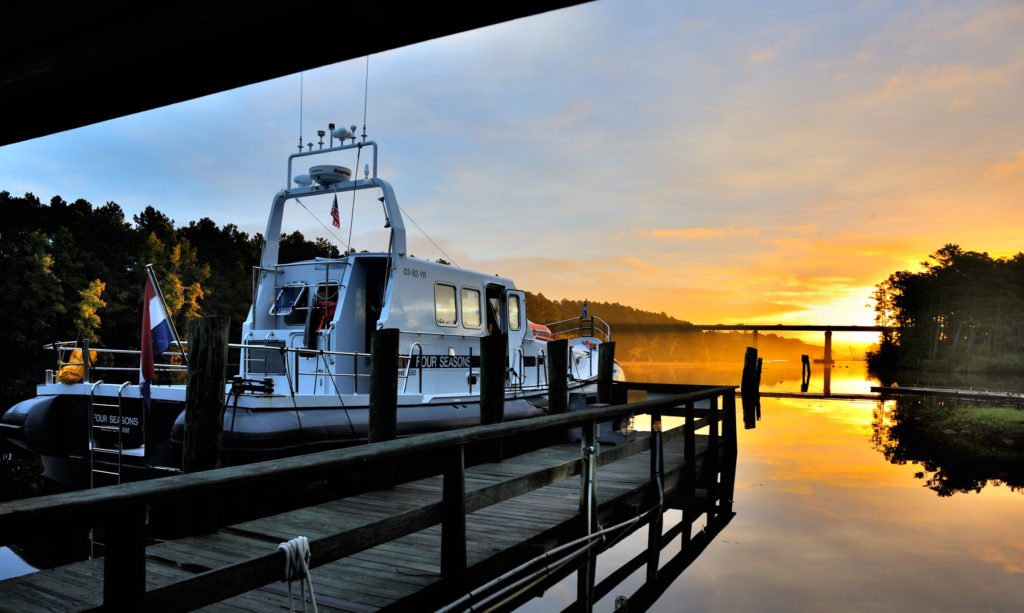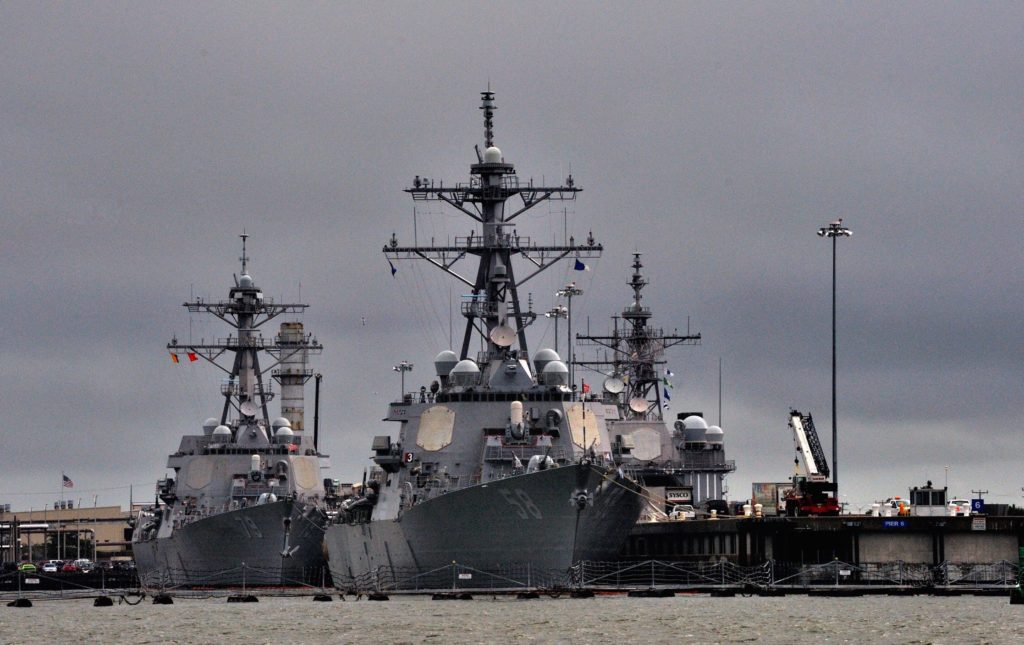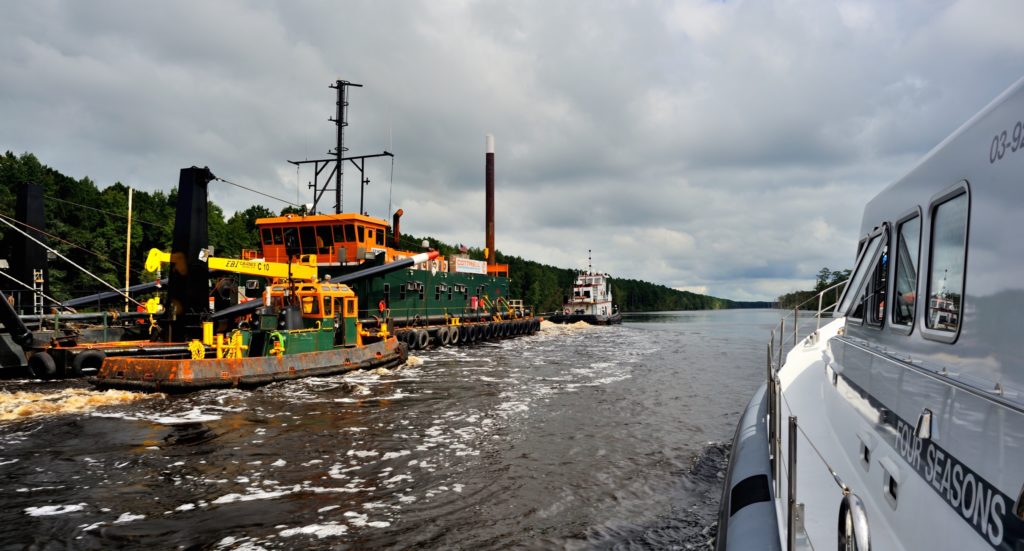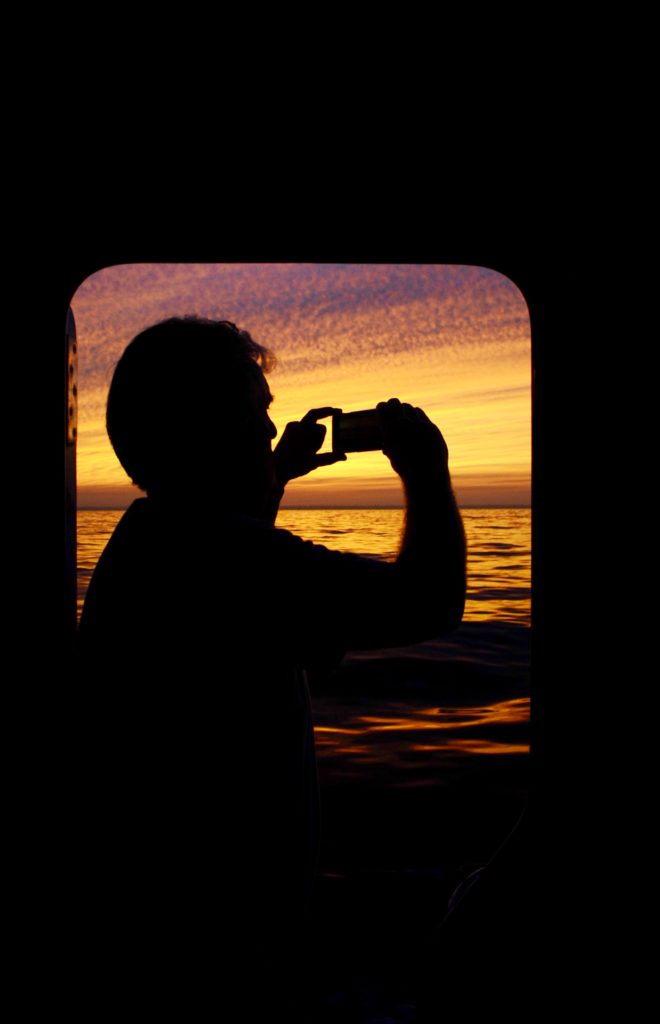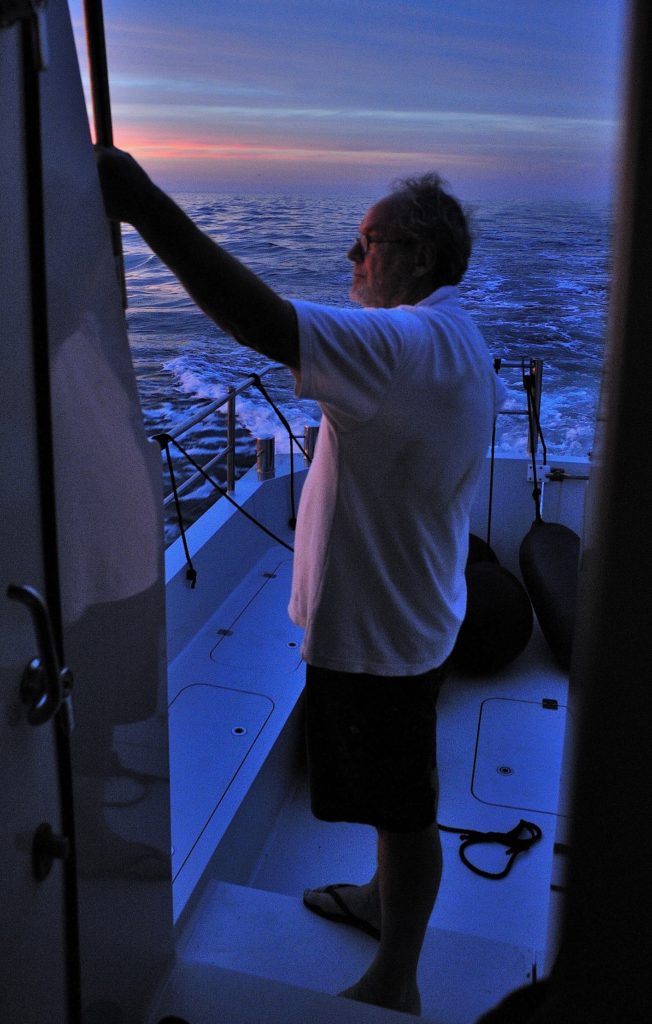Tuesday–Friday. September 20-23
We leave New York Tuesday afternoon. We had hoped to stay longer but time is running out. Still 1000 NM to go and the weather is not always cooperating.
We all feel the impact of sailing now for almost six weeks and continuing for many nights. We plan to arrive in Fort Lauderdale on October 1 at the latest. Then we will have three days to take it easy, do some sightseeing and make some photo and video shoots.
En route to Norfolk we have reasonably favourable tail winds and the next day we arrive in Ocean City for a short stop. Ocean City is a typical seaside resort. The kind you find everywhere. Beaches, boulevard with shops and an amusement park. Despite the late season there are many visitors, mainly colourfully outfitted pensioners. It’s a flat coast with a narrow strip of low dunes, on one side sandy beaches on the other side, lagoons fill and empty with the tide. This causes very strong currents and when entering a harbour in the lagoon one has to be very alert.
After several hours after checking and rechecking the weather maps, this because of a remainder of a hurricane near Norfolk, we decide to continue toward Norfolk, the world’s largest naval port. The wind increases to 20/25 kts although quarter astern. Sleeping when not on watch duty is less comfortable when waves are rolling underneath the ship. Edzard in his forward cabin is really affected.
At dawn, after sailing for two continuous nights, we enter Chesapeake Bay and head for our first stage of the Intracoastal Waterway (ICW). A waterway built in the last century between the south of Florida and Norfolk. It provided safe passage in WWII, to evade the German U-boats that were patrolling the Atlantic Coast of the USA. The ICW passes straight through the Norfolk ports. Left and right those often huge navy ships. Waiting in their docks to be prepared for service or dismantled to be refitted and converted to radar invisible ‘stealth” warships
Sailing on the ICW we pass several bridges. Often high enough to pass underneath but also a few lifting and swing bridges. Constructed in a way I’ve never seen in Europe. Industrial Heritage and hopefully saved for the future. This part of the ICW is mainly a manmade canal in a swampy environment. Occasionally we have lakes, creeks and some hamlets and houses. The first part still lies in the Norfolk urban area, with many roads crossing the ICW.
Near Chesapeake we enter the first lock and the lock operator informs us that because of the heavy rainfall one of the next swing bridges is out of order. The water has flooded the electro motors and the canal level has to decrease first. It’s unknown how long this will last. We moor at the yacht harbour just behind the lock and visit the local “ take-away” Mexican. All buildings are air-conditioned, everybody is inside. Outside it’s 28° C and no terraces… But lots of traffic racing past us. Everything is built for cars only. Crossing the road is quite a trick!
The next day we decide to try an alternative routing and to circumnavigate the disruption. Once back in the lock we hear that this way is also closed because of high water level. So we turn back again and wait. At the same moment we plan to go to the village for a walk , several huge gravel barges with pushers pass by. We are informed that the bridge is operating again. Ropes away and off we go! We are lucky, the temperature is rising significantly and a breeze is welcome. We are leaving the urban area. The surroundings change into the characteristic North Carolina swamp area, but also resembles the Dutch landscape. It reminds us of the Dutch river, estuary and lake landscapes. You don’t have to cross the ocean to experience this part. But it’s very beautiful and sailing is quiet and delightful. A few moments later some crazy watercraft macho’s perform antics on our stern waves while FS pushes forward. Admired by many, weekend joy and toys for boys.
We pass several commercial push and tow combinations. One measures at least 500 m. In front a tugboat, followed by a pontoon with excavating machines, and behind several hundred meters loaded with pipes. Two smaller push boats assist during cornering. Those combinations carry on 24 hrs. a day. Some hours later, in the evening, we have berth in the yacht harbour “Coinjocks”. We enjoy the peace and quiet on deck when the last combination passes by and continues into the dark. We wait for now and stay the night…
